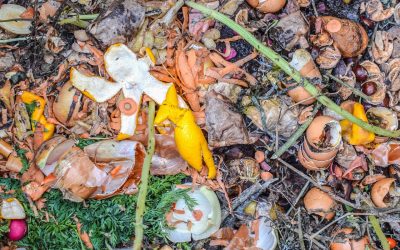Material Recovery Facilities (MRFs) play a vital role in waste management, scrap processing, and the recycling industry. MRFs specialize in separating, sorting, and ultimately preparing recovered materials for sale to an end buyer.
However, increasingly strict international regulations have made recycling contamination a growing concern for MRFs. For example, China’s recent “National Sword” policy tightened regulations on contaminant levels for scrap and other recovered materials. This policy, which went into effect in early 2018, banned imports of 24 types of waste materials and set stricter standards for contamination levels in others. As a major importer of scrap and recycled materials, China’s updated regulations have put pressure on MRFs to produce a cleaner, less contaminated end product.
As national and international policies press for a cleaner recycled product, there are a number of ways that MRFs can reduce contamination. We’ll explore a few of those options in further detail within this article.
1. Raise Recycling Contamination Awareness and Educate Consumers
Curbside recycling is among the largest contributors of recycled materials. This is particularly true in developed countries where many municipalities have implemented residential recycling programs that encourage residents to separate materials for curbside pickup. However, while consumers provide a significant source of material, they also heavily contribute to contamination. In fact, 1 in 4 items recycled by a consumer is not recyclable through curbside programs.
Generally, consumers are responsible for “small contamination” entering into the recycling stream, including:
- Plastic bags
- Food waste
- Non-recyclable or incorrectly sorted plastics
While other forms of small contaminants exist, these are by far the most common culprits. They are also the most difficult contaminants to spot. Unfortunately, this can make curbside recycling contamination a costly problem for MRFs: contaminants slow down production, reduce material value, and lead to potential safety hazards.
Through consumer education programs, recyclers can help reduce curbside contamination. Some of the most common and successful methods for educating consumers, include:
- Regularly mailing outreach materials to local businesses and residents.
- Engaging the public through social media, local government websites, and community TV stations.
- Explore ways to invite community leaders and members to experience recycling processes first hand, for example offering open educational opportunities to students or the community.
- Tagging improperly sorted materials at curbside locations.
By adopting a community-driven approach to consumer outreach and education, MRFs and municipalities can help to reduce the amount of curbside recycling contamination.
2. Perform Detailed Material Audits
One of the biggest challenges for MRFs is stopping the contamination at the door. This means catching contaminated material before it makes it to the MRF floor. There are a few ways that this can be accomplished. Plant operators can conduct audits on the presort floor to identify contamination before the materials end up on the line. Even more proactive is conducting audits of trucks before they are able to transfer loads to the MRF floor.
Additionally, MRFs can work with haulers to identify contaminant sources. While challenging, it’s sometimes possible to identify certain communities or businesses that are heavy contributors to contamination. Knowing where significant sources of curbside recycling contaminants are coming from can help MRFs or municipal authorities deploy targeted education efforts and resources.
Performing additional or more thorough audits comes with added costs, like extended pre-production times. In addition, even the most thorough audits will inevitably miss contamination. Despite the potential of added up-front costs, on-site and pre-sort audits can reduce contamination, slowdowns, and production stoppages. The result is safer processes and a cleaner end product – both of which often outweighing the initial costs.
3. Invest in Screening System Upgrades
Screening equipment is a vital part of every MRF operation. However, outdated screening machinery and sorting equipment can be costly, especially older machines that require significant upkeep and maintenance. In addition, the high amounts of non-recyclable contamination that passes through MRFs causes further wear and tear on this equipment. Constant repairs cause processing delays and are a potential safety hazard for MRF employees. Newer screening systems can help alleviate many of these issues.
By investing in a screening system upgrade, MRFs can more efficiently sort materials, thus providing a strong return on investment. Newer machinery also has the advantage of reducing upkeep and maintenance downtime – helping to additionally streamline the recovery process.
Finally, newer recovery and screening machinery is designed specifically to address modern problems faced by MRFs. In other words, recovery facilities using fifteen year old equipment are trying to meet today’s recycling challenges with solutions designed for outdated processes.
For these reasons, one of the most efficient ways to reduce recycling contamination and meet stricter regulations is to invest in equipment that is designed with modern challenges in mind.
AEI’s Recovery Solutions
Today’s recycling and recovery challenges are clear: stricter regulations require more efficient recovery processes. To meet these demands, AEI offers the BIVITEC® screen.
Offering high capacity efficient screening, the BIVITEC® is designed to screen difficult, high-moisture materials without plugging or blinding the screen media. Compared to conventional vibrating screens, trommel screens, and star screens, the BIVITEC® is an ideal screening solution for processing recycled materials from e-scrap to consumer waste.
Contact our sales team for more information and to request a quote for your MRF.


